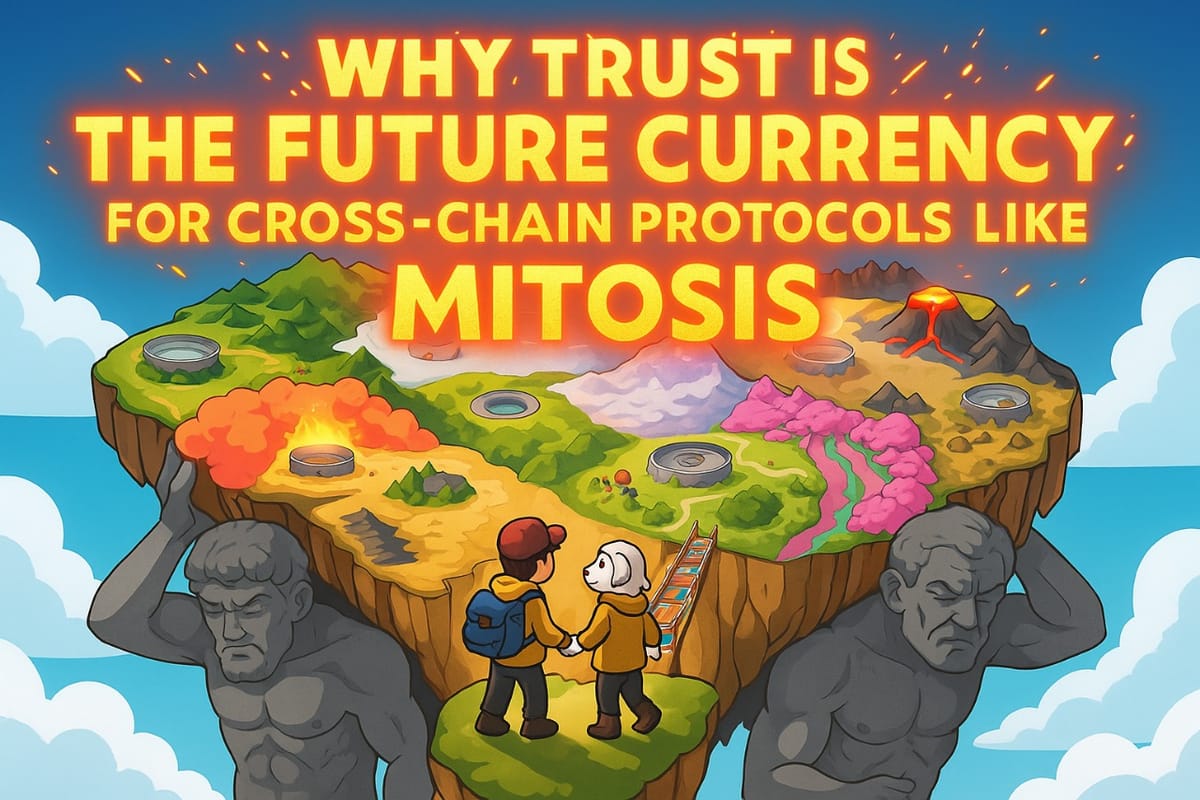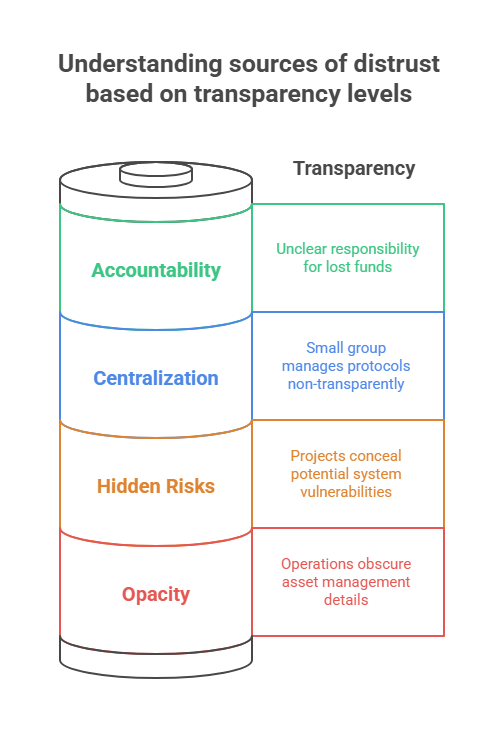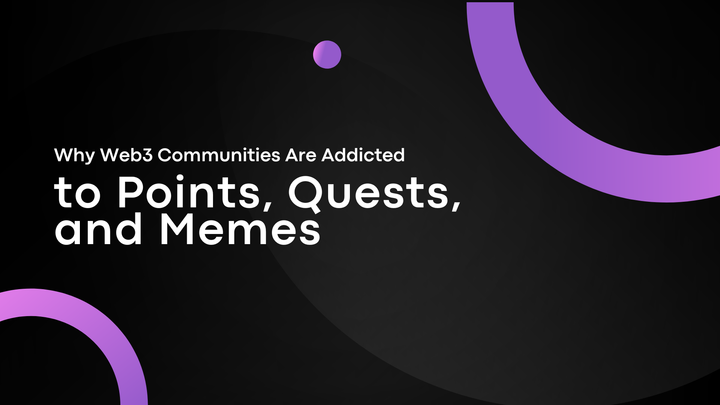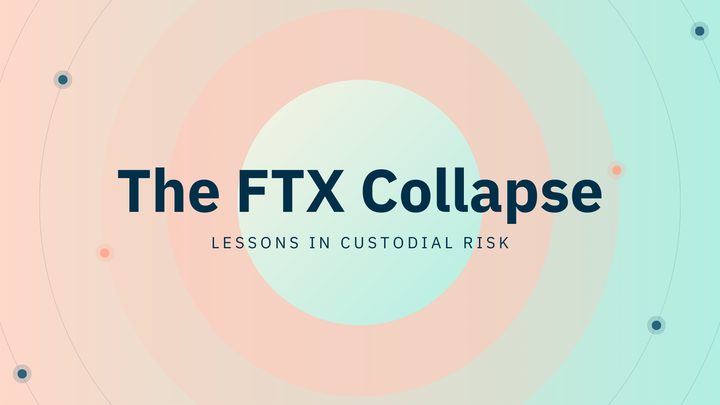Beyond Code and Contracts: Why Trust is the Future Currency for Cross-Chain Protocols like Mitosis

1. Introduction: The Trust Crisis in the World of Bridges and Protocols
The world of decentralized finance and cross-chain technologies opens up incredible opportunities. However, behind the glitter of innovation and the promise of high yields lies one of the industry's most serious problems – a deficit of trust. High-profile bridge hacks worth hundreds of millions of dollars, opaque governance mechanisms, and hidden risks in smart contracts all undermine users' faith in the reliability and honesty of many projects.
When it comes to transferring your assets from one network to another, you are essentially entrusting the protocol with the safety of those funds. But what should this trust be built upon? Is it solely on promises of security and code complexity? Experience shows that this is not enough.
Problems that breed distrust:
- Opacity of Operations: Users often don't understand what happens to their assets "under the hood" of a bridge or protocol.
- Hidden Risks: Not all projects speak honestly and openly about the potential vulnerabilities of their systems.
- Centralization of Governance: Many "decentralized" protocols are, in fact, managed by a small group of individuals whose decisions may be non-transparent or contrary to the community's interests.
- Lack of Clear Accountability Mechanisms: What happens if funds are lost after all? Who is responsible, and are there any compensation plans?

This trust crisis is a significant barrier to the mass adoption of Web3. Users and investors increasingly ask: "Who can I trust in this 'Wild West' of decentralized technologies?"
Mitosis: A Commitment to Accountability and Transparency
Against this backdrop, Mitosis, a next-generation liquidity protocol, aims not only to offer a technologically advanced solution for cross-chain interactions but also to build its relationship with the community on the principles of accountability and transparency. The project team recognizes that without user trust, even the most advanced technology cannot achieve long-term success.
What does this mean in practice? It means a commitment to:
- Being open about the protocol's architecture, its security mechanisms, and potential risks.
- Ensuring transparency in the management of key system components, such as Ecosystem-Owned Liquidity (EOL) and the treasury.
- Building clear governance mechanisms that will increasingly involve the community in decision-making processes (via a DAO) over time.
- Responsibly addressing security matters, including regular audits, bug bounty programs, and incident response plans.
- Maintaining an honest and open dialogue with the community, listening to feedback, and promptly informing about important events.
Why is This Important for Mitosis (and for You)?
For Mitosis, building trust is not just "good manners" but a strategic necessity:
- Attracting and Retaining Users: In a highly competitive environment, users will choose the protocol they can trust with their funds.
- Fostering a Strong Community: Transparency and accountability contribute to creating a loyal and engaged community ready to support the project.
- Long-Term Sustainability: Protocols built on trust have a better chance of weathering market storms and developing in the long run.
- Attracting Developers and Partners: Transparent and accountable projects are more attractive for integrations and collaborations.
For you, as a user or potential ecosystem participant, Mitosis's approach to accountability and transparency means greater confidence that your interests are being considered and risks are being minimized as much as possible.
In this article, we will examine the specific steps Mitosis is taking (or plans to take) to build these trust-based relationships and why such an approach is key to creating a healthy and sustainable Web3 ecosystem. We will look beyond the technical aspects and talk about the values that underpin the project.
2. Mitosis's Concrete Steps Towards Transparency and Accountability
Words about trust and transparency are easy to say, but much harder to implement, especially in such a dynamic and complex field as cross-chain DeFi. Let's look at what specific actions and approaches Mitosis is using or may use to realize these principles.
1. Transparency in Technology and Security
- Open Source Code: Although code may be closed during the early stages of development, for a Web3 project striving for trust, publishing the source code of key smart contracts on platforms like GitHub is an important step. This allows independent researchers and the community itself to study the code, identify potential vulnerabilities, and verify its compliance with stated functions.
- Public Security Audits: Mitosis should regularly undergo security audits from reputable third-party firms. It's not just the existence of audits that matters, but the publication of their full reports, including found vulnerabilities (even if they were fixed) and auditors' recommendations. This demonstrates a serious attitude towards security and a willingness to learn from mistakes.
- Detailed Technical Documentation: Providing clear, comprehensive, and up-to-date documentation explaining the protocol's architecture, its working mechanisms (including EOL and interaction with AVS), and potential risks. This documentation should be accessible to both technical specialists and a broader audience.
- Bug Bounty Programs: Actively encouraging white-hat hackers to find and responsibly disclose vulnerabilities. This not only helps improve security but also shows that the project values the community's contribution to this process.
2. Transparency in Treasury and EOL Management
The Ecosystem-Owned Liquidity (EOL) model is one of Mitosis's key features. Transparent management of this liquidity and the project's treasury is critically important for trust.
- Public Treasury Addresses: Providing public wallet addresses where treasury and EOL assets are stored allows anyone to track their movement and balance.
- Reporting (Regular or On-Demand): Periodic publication of reports on the state of the treasury, its sources of replenishment, EOL deployment strategies, and the results of these strategies.
- Understandable Governance Rules (in the future via DAO): A clear description of who makes decisions regarding treasury and EOL management and how. In the long term, these decisions should be made decentrally through a DAO, where the community will have voting rights.
3. Decentralization of Governance (DAO) as the Ultimate Goal
For any project claiming to be "decentralized," transitioning to governance via a DAO (Decentralized Autonomous Organization) is a logical and necessary step.
- Phased Transition: Mitosis can move towards full decentralization of governance gradually, starting with advisory mechanisms and eventually transferring key decision-making rights to governance token holders.
- Role of the Native Token: (If and when a token is launched) The native Mitosis token will likely play a central role in the DAO, giving its holders voting rights on issues such as:
- Protocol upgrades.
- Fee changes.
- Allocation of funds from the treasury.
- Adding support for new networks or assets.
- Choosing parameters for EOL and security strategies.
- Transparency of the Voting Process: All proposals, discussions, and voting results in the DAO must be public and easily traceable.
4. Communication and Community Engagement
Open and honest dialogue is the foundation of trust-based relationships.
- Active Community Channels: Maintaining active and moderated channels on Discord, Telegram, Twitter, and other platforms for communication with users, answering questions, and collecting feedback.
- Regular Updates and AMA Sessions: Periodically informing the community about development progress, achieved results, future plans, and answering questions in an "Ask Me Anything" format.
- Honest Acknowledgment of Problems: In the event of technical problems, vulnerabilities, or incidents, it is important not to cover them up but to promptly and honestly inform the community about what happened, the measures taken, and plans to prevent similar situations in the future.
- Educational Content: Creating articles, guides, videos, and other materials to help users better understand how Mitosis works, what risks exist, and how to use the protocol safely.
Conclusion: Trust is Earned, Not Given
Building trust is a marathon, not a sprint. It requires consistent effort, honesty, and a willingness to be open with your community. Mitosis, by betting on transparency in technology, governance, and communication, is laying the right foundation for long-term and strong relationships with its users.
In a world where too many projects have promised the moon and then disappeared or proven vulnerable, an approach based on accountability and openness becomes not just a competitive advantage, but a necessary condition for survival and prosperity. For users, this means greater confidence and security, and for Mitosis itself, it means the opportunity to build a truly strong and loyal ecosystem around its protocol. The path to full trust is long, but the steps Mitosis is taking towards transparency and accountability indicate movement in the right direction.
Learn more about Mitosis:
- Explore details on the official website: https://www.mitosis.org/
- Follow announcements on Twitter: https://twitter.com/MitosisOrg
- Participate in discussions on Discord: https://discord.com/invite/mitosis
- Read articles and updates on Medium: https://medium.com/mitosisorg
- Blog: https://blog.mitosis.org/



Comments ()